Introduction:
Artificial Intelligence (AI) stands as the cornerstone of modern technological advancements, revolutionizing industries, shaping economies, and redefining human capabilities. This article delves into the multifaceted dimensions of AI, its impact on society, and the unparalleled contributions it offers to the future of technology. As we explore the vast landscape of AI, it’s essential to recognize educational institutions like Kaashiv Infotech, which provide comprehensive courses in Artificial Intelligence and Data Science, catering to aspiring professionals in Chennai and beyond.
Philosophy of AI:
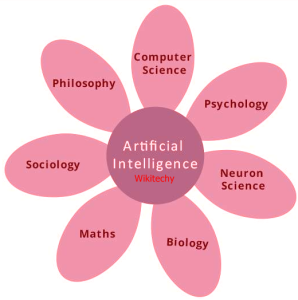
As he was taking advantage of computer systems’ capacity, human curiosity caused him to ask, “Can a machine think and behave like humans do?”
Therefore, the goal of AI development from the outset was to imbue computers with a level of intellect comparable to that which we value highly in humans. The science and technology of artificial intelligence is derived from fields like computer science, biology, psychology, linguistics, mathematics, and engineering. The development of computer abilities related to human intellect, such as learning, thinking, and problem solving, is a key focus of artificial intelligence (AI). One or more of the following domains may aid in the development of an intelligent system.
What is AI technology ?
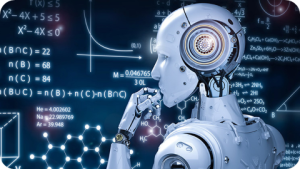
In the real world, data has some undesirable characteristics − It is vast, incomprehensible. It is not well organized or structured. It is constantly changing. AI technology is one way of organizing and to organize using information effectively so that − It is traceable to the people who provide it. It should be easy to change to correct errors. In many cases it should be useful if it is incomplete or inaccurate. Artificial intelligence techniques increase the execution speed of a complex program.
Applications of artificial intelligence
Artificial intelligence dominates in several fields such as −
Games − Artificial intelligence plays an important role in strategic games such as chess, poker. , tic-tac-toe, etc., where the machine can come up with a large number of possible positions based on heuristic knowledge.
Natural language processing − It is possible to communicate with a computer that understands natural language spoken by humans.
Expert systems – Some applications integrate machines, software and specialized information to provide reasoning and advice. They provide explanations and advice to users.
Visual systems – These systems understand, interpret and make sense of visual input to a computer. For example,
A spy plane takes photos that can be used to find information about a location or a map of areas.
Doctors use a clinical expertise system to diagnose a patient.
The police use a computer program to identify a criminal. face using portraits recorded by a forensic artist.
Speech recognition – some smart systems can hear and understand language in the form of sentences and what it means when a person speaks to it. It can handle different accents, slang words, background noise, changes in human noise caused by cold, etc.
Handwriting recognition – Handwriting recognition software reads text written on paper with a pen or screen with a pen. It recognizes the shape of letters and converts it into editable text.
Intelligent Robots – Robots can perform tasks assigned by humans. They have sensors that detect real physical data such as light, heat, temperature, motion, sound, shock and pressure. They have powerful processors, multiple sensors and a huge memory that shows their intelligence. In addition, they are able to learn from their mistakes and adapt to a new environment.
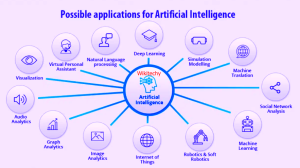
Types of Artificial Intelligence
1. Purely Reactive
These machines have no memory or data to use and specialize in only one job. For example, in a game of chess, the machine observes the moves and makes the best possible winning decision.
2. Limited memory
These machines collect past data and continuously add it to their memory. They have enough memory or experience to make the right decisions, but they have little memory. For example, this machine can recommend a restaurant based on the collected location data.
3. Theory of Mind
This type of artificial intelligence can understand thoughts and feelings and participate in social interactions. However, a machine based on this type is not yet under construction.
4. Self-Aware Machines
Self-Aware Machines are the next generation of these new technologies. They become intelligent, sensitive and aware.
Human Vs Artificial Intelligence

The difference between human and machine intelligence
Humans perceive according to patterns, while machines perceive according to rules and data.
Humans store and store information according to patterns, machines according to search algorithms. For example, the number 40404040 is easy to remember, store and remember because its pattern is simple.
People can understand the whole object, even if some part of it is missing or distorted; while machines cannot do it properly.
Artificial Intelligence – Popular Search Algorithms
Search is a universal technique for solving problems in artificial intelligence. There are some single-player games like blocks, sudoku, crosswords, etc. Search algorithms help you find a specific location in such games.
Single agent search problems
Games such as 3×3 eight tiles, 4×4 fifteen tiles, and 5×5 twenty four tiles are single agent search challenges. They consist of a matrix of tiles with an empty plate. The player must place the blocks by sliding the blocks either vertically or horizontally into an empty space to reach the goal.
Other examples of single agent pathfinding problems include the Traveling Salesman Problem, Rubik’s Cube, and Theorem Proof.
Search Terminology
Problem state – This is the environment in which the search is performed. (A set of states and a set of operators to change those states)
Problem Instance – This is the initial state + goal state.
Problem Space Graph – This represents the state of the problem. States appear on nodes and operators on edges.
Task depth – The length of the shortest path or shortest sequence of operators from the start state to the goal state.
Spatial complexity – The maximum number of nodes stored in memory.
Time complexity – The maximum number of nodes that can be created.
Acceptability – The property of an algorithm always finding an optimal solution.
Crowding factor – The average number of child nodes in the graph of the problem space.
Depth – The length of the shortest path from the initial state to the destination state.
Brute Force Search Strategies
These are the easiest because they don’t require any domain-specific knowledge. They operate with a very small number of possible states.
Assumptions:
- Description of state
- Set of valid operators
- Start state
- Description of destination
Breadth First search
It starts at the root node, first examines its neighboring nodes, and moves to next neighbors. It creates one tree at a time until a solution is found. This can be implemented using a FIFO queue data structure. This method provides the shortest path to the solution.
If the branching factor (average number of sublevel nodes at a given node) = b and depth = d, then the number of nodes at level d = bd.
The total number of nodes created in the worst case is b + b2 + b3 + … + bd.
Disadvantage – As each node level is saved to create the next one, it takes up a lot of memory space. The storage requirement of nodes is exponential.
Its complexity depends on the number of nodes. It can check for duplicate nodes.
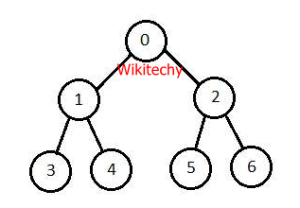
Depth-First search
It is implemented as a recursion with a LIFO stack data structure. This creates the same nodes as the Breadth-First method, just in a different order.
Since the nodes of a single path are stored from the root to the leaf node in each iteration, the storage requirement for nodes is linear. For branching factor b and depth m, the storage is bm.
Disadvantages − This algorithm may not terminate and continues along a single path indefinitely. The solution to this problem is to choose the depth of cut. If the ideal limit is d and the selected limit is less than d, this algorithm may fail. If the selected limit is greater than d, the execution time increases.
Its complexity depends on the number of paths. It cannot check for duplicate nodes.
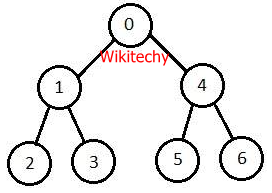
Bidirectional search
It searches forward from the source state and back from the destination state until both meet to identify a common state.
A path is joined from the source state to the reverse road from the finish line. Each search is performed only on half of the entire path.
Uniform cost search
Sorting is performed according to the cost of the path to the node. It always expands the cheapest node. This is identical to a Breadth First search, except that each transition has the same cost.
It searches for paths in increasing order of cost.
Disadvantages – There may be many long paths with cost ≤ C*. A uniform cost search must explore them all.
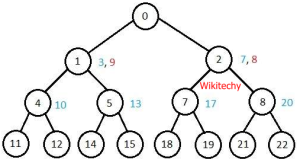
Conclusion:
In conclusion, our journey through the fundamental concepts of artificial intelligence, to learn more about the domain Kaashiv Infotech has set a foundation for both novices and enthusiasts aiming to dive deeper into this revolutionary field. Kaashiv Infotech, by offering comprehensive courses on machine learning, data science, and artificial intelligence, stands as a beacon for those aspiring to grasp the intricacies of AI and its subdomains. These courses are meticulously designed to bridge the gap between theoretical knowledge and practical application, ensuring that learners not only understand AI concepts but also know how to implement them in real-world scenarios.

